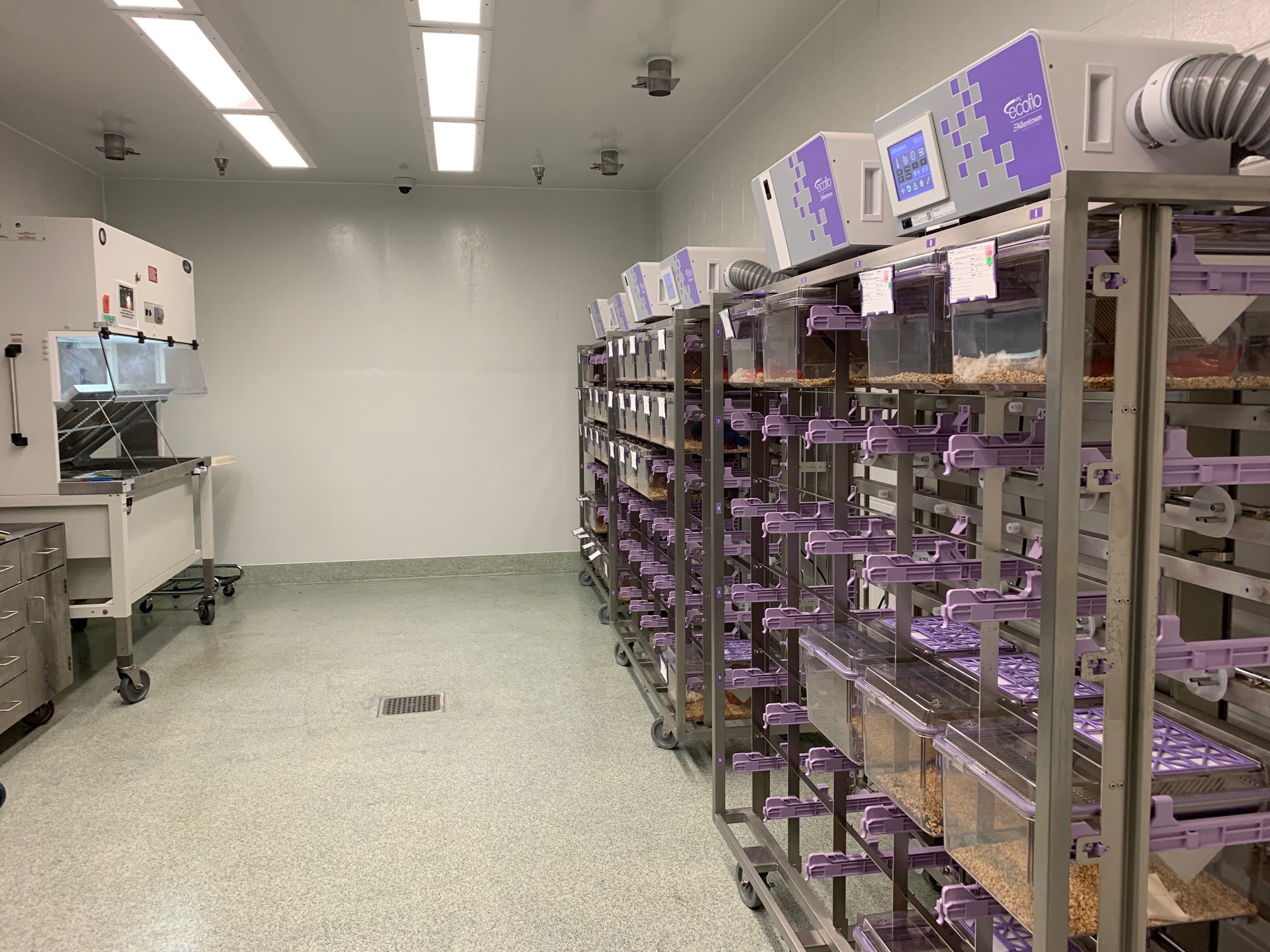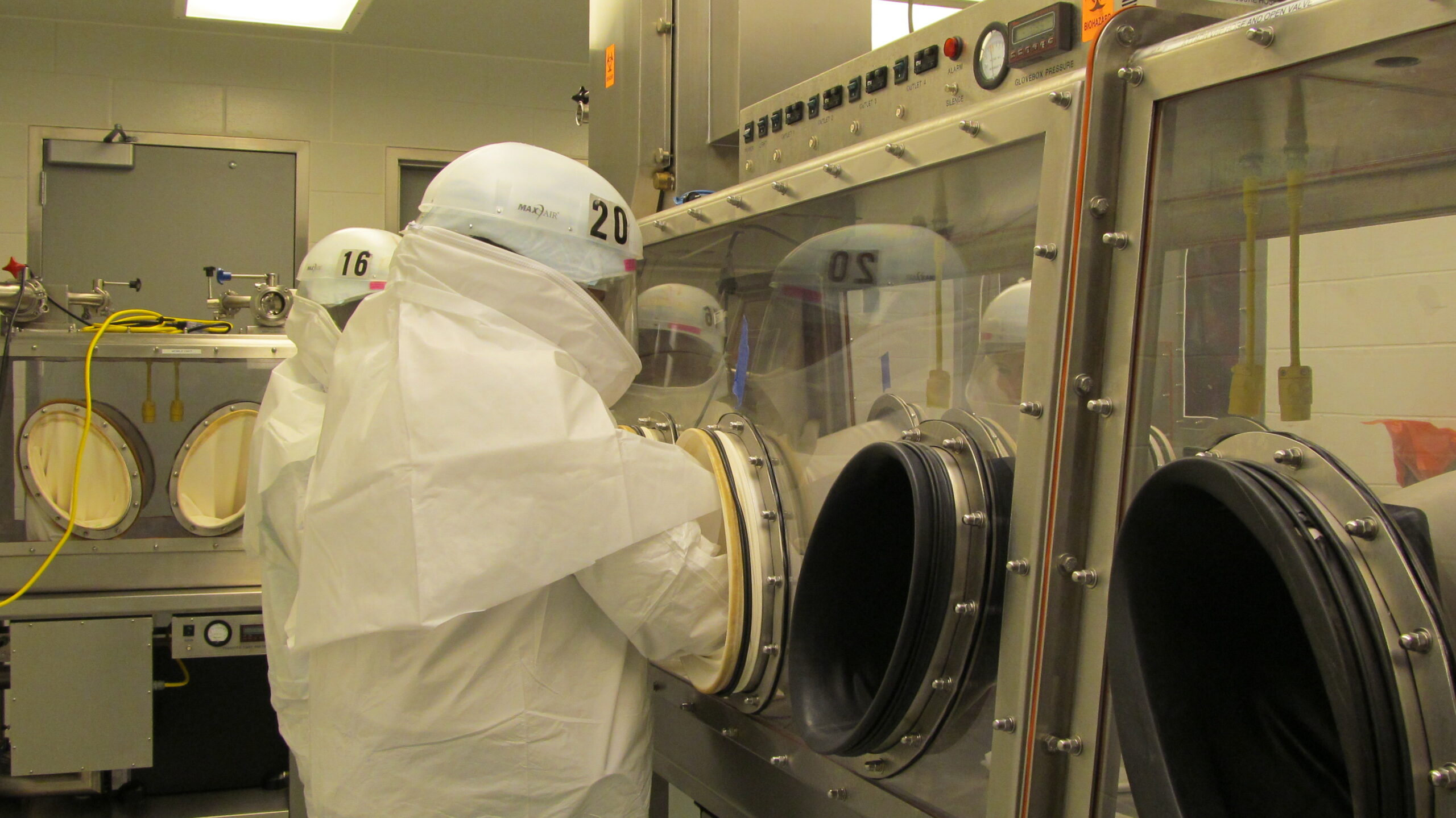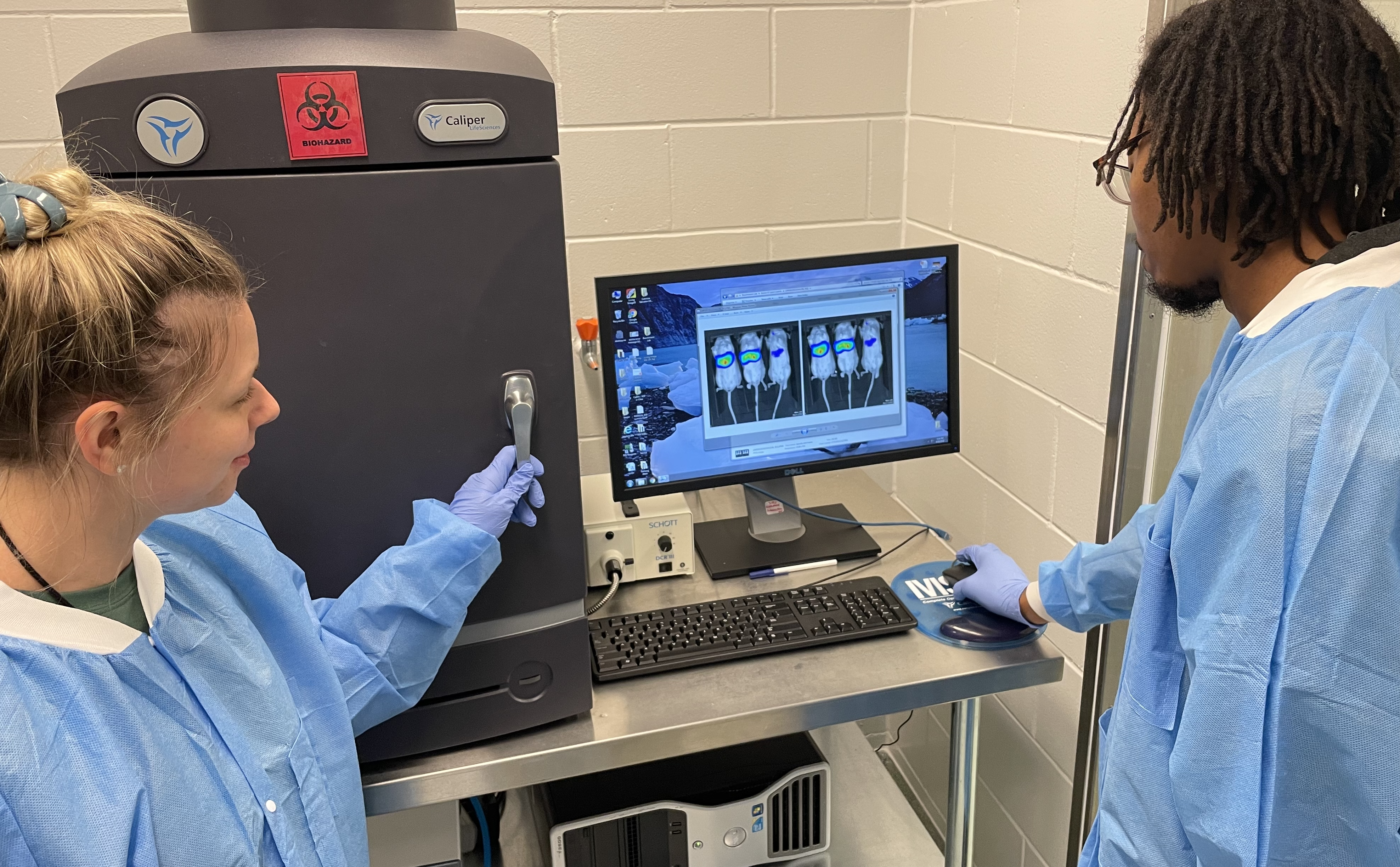The AAALAC certified BRL vivarium supports research on infectious agents in animal models to understand disease pathophysiology and host response to infection, as well as evaluate newly developed and repurposed vaccines and therapeutics. The BSL-2 and BSL-3 vivarium is used by Mason faculty and a research services team, which is available for collaborative and contracted work with investigators in academia, not-for-profit organizations, industry, and government studying biodefense and emerging infectious diseases.
Animal care staff operate under the guidelines of the American Association for Laboratory Animal Science (AALAS). Personnel are trained in all aspects of biocontainment safety practices and procedures. They have expertise in protocol development, animal husbandry/care, breeding, and conducting in vivo BSL-2 and BSL-3 studies.
ABSL-2 and ABSL-3 Animal Studies
Capability and services provided at the BRL vivarium include:
- The BRL is equipped to perform research on multiple species, including mice, rats, hamsters, ferrets, and rabbits
- Animal procedure and assay development assistance to support submission for IACUC approval
- Routine husbandry for infectious disease research ranging from weights and daily observations to infections, blood and tissue collection, minor surgeries, and full necropsy
- Technical support for projects requiring ABSL-3 containment and involving work with the U.S. Department of Agriculture and CDC select agents
- Support of breeding colonies for research specific animal models
Aerobiology
The aerobiology core enables nose only and whole body exposures of animals to BSL-2 and BSL-3 aerosolized bacterial and viral pathogens. Ten mice can be exposed in a single run, with multiple runs possible. The available equipment can also be used to test aerosolized delivery of therapeutics and vaccines and detect aerosolized pathogens. Equipment available for aerobiology studies includes:
- Germfree Class III Hoodline and Mobile Cart
- Biaera Automated Aerosol Genertion System
Animal Imaging
Animal imaging equipment available in the BRL enables non-invasive longitudinal monitoring of disease progression and organ function. The equipment is used to study distribution of pathogens, organ-specific pathogen loads, biodistribution of therapeutic and vaccine candidates, and blood-oxygen levels. This information can be further used to elucidate effectiveness, bioavailability, stability, and toxicity of new countermeasures. Equipment currently available for animal imaging includes:
- Fuji Vevo F2 LAZR-X
- IVIS Lumina II from Caliper Life Sciences (for rodents)
- Mediso PET/CT (for rodents and non-rodents)
- Spectral Instruments Imaging – Lago X



